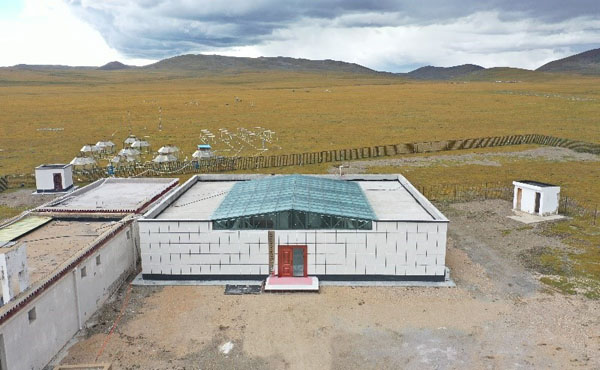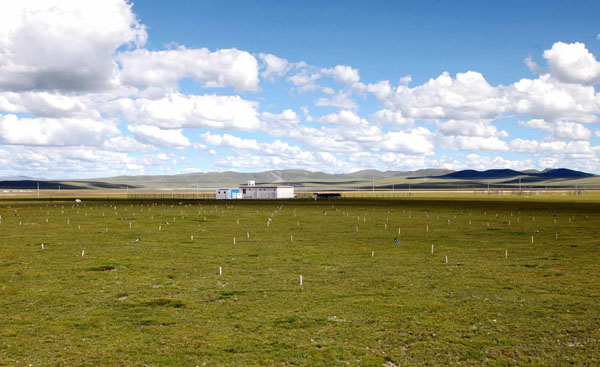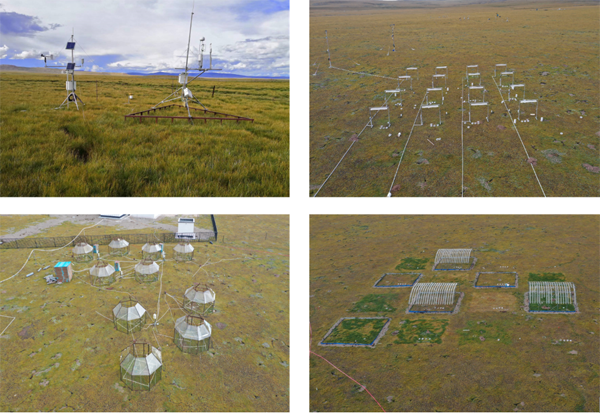Naqu Ecological Research Station
Naqu Ecological Research station is located in the core zone of the Northern Tibetan Plateau (31°38.513′N, 92°00.921′E, 4606 m a.s.l.), which is affiliated to Institute of Geographic Sciences and Natural Resources Research, Chinese Academy of Sciences. The Station′s mission is: 1) to monitor long-term ecological and environmental changes in northern Tibet; 2) to conduct research relating to effects of climate changes and human activities on ecosystem structure and function of alpine grassland; 3) to provide scientific guidance for local sustainable development.


Naqu Ecological Research Station in northern Tibet
Climatic Conditions
The region is characterized as the typical plateau sub-frigid monsoon climate. The annual mean air temperature ranges between -0.9 ℃ and 3.3 ℃. The extreme high and low temperatures can reach 22.6 ℃ and -41.2 ℃, respectively. The cumulative temperature above 0 ℃ is 1003.5 ℃. The relative humidity is 48%--51%. The annual mean rainfall is 400 mm, with 80% falling between June and September. The average annual evaporation approximates 1800 mm. The annual average sunlight is 2852.6-2881.7 h. The annual frost period is 103 days, with no absolute frost-free period throughout the year.
Vegetation and Soil
The vegetation is dominated by Kobresia pygmaea, and accompanied by Potentilla bifurca, Potentilla saundersiana Royle, Leontopodium pusillum, and Carex moorcroftii, etc. The soil is classified as meadow soil with sandy loam. The soil thickness is shallower than 30 cm. The soil pH is 0.74 at 0-10 cm depth.
Experimental and Observation Systems
Naqu Station has established a series of manipulative experiments to simulate environmental conditions (e.g. climate warming, altered precipitation, nutrients addition and elevated CO2) under global change scenarios, aiming to reveal the mechanism underlying alpine grassland ecosystem response to global changes. The observation facilities include meteorological monitoring stations, carbon flux towers, SIF, Li-7500A, Li-7700, CO2 concentration control system and phenology monitoring cameras. After over a decade of hard work, Nagqu Station has achieved substantial progress, and has been officially selected as one of the national field stations in China.

Experimental and observation systems in Naqu Station
Long-term Objective
(1) Establishing the Space-Air-Ground integrated monitoring system based on Naqu Station, as well as a big data collecting platform for the ecological environment of the alpine grasslands in northern Tibet
(2) Revealing the biological and environmental mechanisms regulating alpine grassland ecosystem dynamics under global changes
(3) Providing guidance for ecosystem management and developing regional sustainable development model for northern Tibet
Contact
Dr. Yangjian Zhang
A11, Datun Road, Chaoyang District, Beijing 100101
Tel: +86-010-6488 9703
E-mail: zhangyj@igsnrr.ac.cn